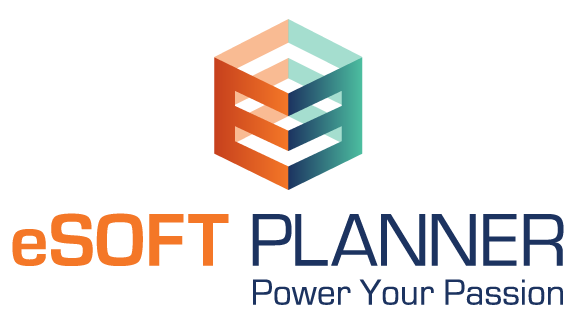Facility Scheduling Software Makes it Easier – We Promise!
What You Should Know Before Investing in Facility Scheduling Software
We get it. Adopting new facility scheduling means spending hours of time learning how to use it. It also means changing routines that your clients and staff may already be comfortable with. With this time commitment and change in workflows, it’s easy to see why sports facility owners let the search for new facility scheduling software fall to the bottom of their to-do list.
It’s time to stop procrastinating! Your business is losing money every day if you’re still scheduling with forms and calendars. Even if you use a “free” system or one that isn’t designed for sports facilities, you’re up against unnecessary admin costs, poor customer service, and mistakes. A better scheduling system could prevent this.
So, what should you look for as you start your search for a scheduling system?
The best fit for your business will depend on your needs and your budget. Each system you consider should have the following three important qualities that make and save money for your business.
Optimal Pricing
When you look at facility scheduling software costs, focus on value first.
You shouldn’t reject any scheduler based on price alone. The most expensive system may also be the one that saves you the most money overall due to better features or customer support (which we’ll discuss next).
That said, web-based scheduling systems usually charge their clients each month based on different factors. Some structures will work better for your facility than others. Here are a few examples of online scheduler pricing structures:
- Pay-per-feature structure: Monthly pricing is based on which parts of the software you use.
- Pay-per-location or client: This can lower costs for some smaller businesses, but costs may also increase seasonally or as you expand or restructure.
If you’re going to accept online payment, you’ll also need to pay fees for processing credit card transactions. The fees may be rolled into your software’s monthly service or charged separately. Make sure you’re using the total costs when you’re ready to do a final price comparison.
Great Support
Most major scheduling systems offer customer support. Always find out how long that support will be available after you sign up for the program. Are there any limits to support requests? Will you be assigned a dedicated rep who understands you and your business?
Reliable customer support is even more important if you don’t consider yourself a “computer person” and want to regularly work with someone who will pay extra attention to your account.
Features That Increase Profit
It’s important to know what the facility scheduling software does for your business. As we move through a list of possible features, keep your eye on the bottom line. Your scheduling software should:
- Save paid admin staff hours by allowing clients online self-service options.
- Save paid admin staff hours because the software auto-bills your memberships.
- Create extra revenue from online stores or services that the software makes it easy to promote and sell.
- Reduce late cancellations and no-shows through automated reminders
Once you calculate how much money each feature could save your businesses, it will be easier to evaluate final software costs.
Scheduling Software Should be on the Web
Until recently, many facilities were still using scheduling software that was installed on computer hard drives. That meant that if the computer crashed or was stolen, the program and the data went with it. It also meant that clients would have to call to make sure they had the most updated version of any scheduler.
By default, most scheduling software is now offered online as a software as a service (SaaS). This saves sports facilities from worrying about servers, backups, or updates.
Here is a list of recommended features you’ll find with SaaS schedulers.
Setup Features
- Operating hours – customize the times of day and year that your clients can schedule, and put them on repeat so you don’t have to update them very often
- Locations – use levels of categorization to help you customize facilities
- Client groups – give certain groups of clients special benefits, such as advanced scheduling, special discounts, and exclusive access to certain programming
- Client and staff management – track and quickly find information on all your clients and staff, including client family member relationships and scheduling and payment histories
- Staff permissions – create custom permissions levels for each of your employees
Scheduling Features
- Rentals – rent out locations and sub-locations, change prices automatically based on time of day or season, determine how far in advance clients can schedule or cancel, add optional equipment or services to rentals
- Lessons – schedule both one-on-one and semi-private lessons, restrict the types of lessons that can happen in each location at your facility, add optional equipment or services to lessons
- Camps and classes – set age limits, size limits and enrollment dates, charge per session or for a group of sessions
- Memberships – check clients into the facility using cards or by name, or just bill clients monthly for regular services (lessons, rentals, etc.)
- Packages – group all types of your services together for sale
- Retail – track inventory and sales for concession stands and pro-shops
- Leagues – create teams, schedules, and post results
Payment and Pricing Features
- Online payment – let your clients pay for their services online
- Refund policy – establish a refund policy for all of your services and have it applied automatically to your clients’ cancellations
- Upfront payment – require upfront payment for scheduling and then waive it as necessary to let trusted clients pay later
- Account credit – give clients the ability to add credit to their accounts for easy spending in the facility, such as parents adding money to a child’s account for the concession stand
Notifications Features
- Email and text notifications – let clients and staff decide when and how they want to be reminded about their upcoming schedules
- Customizable messages – choose what the reminder messages say
Marketing Features
- Messages to clients – let your clients know about your new programs and services through the software
- Email marketing – compose and send emails to clients and manage your client email lists, either with a third-party email program or directly through the scheduling software
- Brandable interface – the system can look like it belongs to your company, with your own logo and colors
Reports & Displays
- Make a list of your essential reports and make that sure each program you consider has them. Same goes with displays; for example, are you used to checking a weekly calendar with hour-by-hour lessons? That specific view might not be available in every system you consider.
Conclusion
eSoft Planner is an easy-to-use and functional software that allows facility owners to schedule training, clinics, and sub-locations within your facility. Communicate with instructors and other facility members through email, text messages, and highly visible alerts on the login page and user dashboard.
The SaaS uses a simple pay-per-feature structure, letting you know the amount you’ll pay each month based on which parts of the software you use. We also offer ongoing client support for the entire time that your facility uses our software.
Schedule a demo today to see how you can spend less time and hassle on scheduling and more time supporting your facility members.

